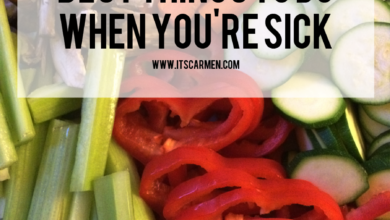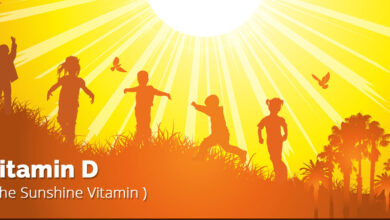
Get Vitamin D Besides Sun: Beyond Sunlight
Get vitamin D besides sun? It’s a question many of us ask, especially when the sun isn’t shining. Vitamin D is essential for strong bones, a healthy immune system, and even mental well-being. While sunlight is the most natural source, there are plenty of other ways to boost your vitamin D levels.
This guide will explore the various ways to get your daily dose of vitamin D, from dietary sources and supplements to lifestyle changes that can help optimize your intake. We’ll discuss the importance of vitamin D, its benefits, and the potential risks of deficiency.
So, let’s dive into the world of vitamin D and discover how to keep your levels topped up, no matter the weather.
Dietary Sources of Vitamin D

While sunlight is the primary source of vitamin D, certain foods can also contribute to your intake. These foods naturally contain vitamin D or are fortified with it. Incorporating these into your diet can help you maintain healthy vitamin D levels, especially during the winter months or if you have limited sun exposure.
Foods Naturally Rich in Vitamin D
Naturally occurring vitamin D is found in a limited number of foods, primarily fatty fish.
- Fatty fish:Salmon, tuna, mackerel, and sardines are excellent sources of vitamin D. A 3-ounce serving of cooked salmon can provide around 447 IU of vitamin D, while the same serving of canned tuna can offer about 154 IU.
- Egg yolks:One large egg yolk contains about 41 IU of vitamin D. While not as high as fatty fish, eggs can still contribute to your daily intake.
- Mushrooms:Some types of mushrooms, particularly those exposed to ultraviolet (UV) light during growth, contain vitamin D2. A cup of cooked shiitake mushrooms can provide around 18 IU of vitamin D.
Fortified Foods, Get vitamin d besides sun
Many foods are fortified with vitamin D to increase their nutritional value.
- Milk:Cow’s milk, almond milk, soy milk, and other milk alternatives are often fortified with vitamin D. A cup of fortified milk can provide about 100-120 IU of vitamin D.
- Orange juice:Some brands of orange juice are fortified with vitamin D, adding an extra boost to your breakfast. A glass of fortified orange juice can provide around 100 IU of vitamin D.
- Cereals:Many breakfast cereals are fortified with vitamin D, making them a convenient way to increase your intake. A serving of fortified cereal can provide around 40-60 IU of vitamin D.
- Yogurt:Some brands of yogurt are fortified with vitamin D. A cup of fortified yogurt can provide around 100-120 IU of vitamin D.
Vitamin D Content of Different Food Sources
The vitamin D content of various food sources can vary depending on factors such as the type of food, the method of preparation, and the brand.
- Fatty fish:As mentioned earlier, fatty fish like salmon, tuna, mackerel, and sardines are rich in vitamin D. However, the exact amount can vary depending on the species, size, and how the fish was caught and processed.
- Eggs:The vitamin D content of eggs can vary depending on the breed of chicken, the diet of the chickens, and how the eggs were stored. Eggs from free-range chickens may contain more vitamin D than those from caged chickens.
- Fortified foods:The vitamin D content of fortified foods is typically standardized, but it’s always a good idea to check the nutrition label for the exact amount.
Comparing the Vitamin D Content of Various Food Options
| Food | Serving Size | Vitamin D (IU) |
|---|---|---|
| Salmon (cooked) | 3 ounces | 447 |
| Canned tuna (light) | 3 ounces | 154 |
| Egg yolk (large) | 1 | 41 |
| Fortified milk (cow’s milk) | 1 cup | 100-120 |
| Fortified orange juice | 1 glass | 100 |
| Fortified cereal | 1 serving | 40-60 |
| Fortified yogurt | 1 cup | 100-120 |
Last Recap: Get Vitamin D Besides Sun
Whether you’re a sun-worshipper or a shade seeker, ensuring adequate vitamin D levels is crucial for overall health. By incorporating a combination of sun exposure, dietary choices, and supplementation, you can maintain healthy vitamin D levels and reap the numerous benefits it offers.
Remember to consult with your doctor to determine the best course of action for your individual needs. Now, go forth and embrace the sunshine (or its alternatives) for a healthier you!
Getting enough vitamin D can be tricky, especially during the winter months when sunshine is limited. But don’t worry, there are plenty of ways to boost your intake besides soaking up the rays! For example, butternut squash black bean chili recipe is a delicious and nutritious way to get your daily dose of vitamin D, thanks to the addition of fortified milk.
So, next time you’re craving a warm and comforting meal, try this recipe and give your vitamin D levels a boost at the same time!
Getting enough vitamin D can be a challenge, especially during the winter months when sunshine is scarce. Luckily, there are other ways to boost your intake, like incorporating foods rich in vitamin D into your diet. For a delicious and easy breakfast option, try these baked egg cups with garlic toast , which are packed with protein and vitamin D from the eggs.
Plus, they’re a great way to start your day with a nutritious and satisfying meal.
Getting enough vitamin D can be tricky, especially if you’re not a fan of basking in the sun. While some foods like fatty fish and eggs are good sources, it’s worth exploring the world of “superfoods” to see if they can boost your intake.
But are these superfoods truly as miraculous as they’re hyped up to be? Check out this article for a balanced perspective on the benefits and hype surrounding superfoods. Regardless of your stance on superfoods, remember that a balanced diet and regular exercise are key to maintaining overall health and getting your daily dose of vitamin D, even if you’re not a sunbather.






